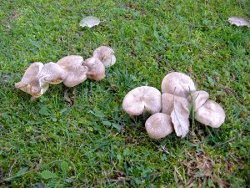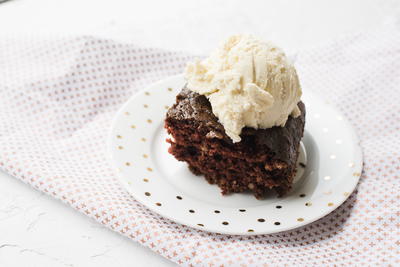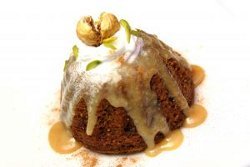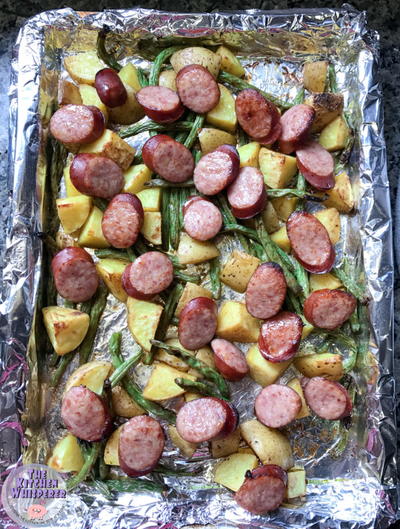Potica
Ingredients
- Potica Dough
- 60 dag warmed, fine-grain dry wheat flour
- 6 dag fresh yeast
- 2 1/2 to 3 dl warm milk
- 10 dag softened butter
- 3 egg yolks
- 10 dag sugar
- 2 Tsp dark rum
- grated peel of 1 lemon
- pinch of salt
Instructions
(pronounce as: paw-tee-tzah, stress on tee). ( 1 dag = 10 g = 0.01 kg ) Sift the flour into a bowl (cover and set in a warm place if the flour has not been warmed previously). Crumb the yeast into a large cup, add 2 Tsp warm milk, 1 tsp sugar and mix; set the yeast into a warm place to rise (the mixture should rise to at least twice its original volume before usage). Mix softened butter, sugar and egg-yolks and beat until the sugar is well dissolved and the mixture is frothy. Warm up the milk, mix in salt, lemon peel, rum and the butter mixture. Form the dough out of the warm flour, yeast and the milk mixture -- the trick is not to pour in all the milk mixture immediately: use about 3/4 to start with, then add more as the dough forms (the quantity of milk (in the above list of ingredients) is not quite fixed -- it depends on the quality of the flour: with very fine-grain flour, very dry, use all 3 dl -- you should use less with inferior quality flour). Beat the dough vigorously with a wooden spoon until the dough is smooth and separates easily from the spoon and the bowl. Cover the bowl with a cloth and set the dough in a warm place to rise -- before continuing, the dough should rise to twice its size. Some Fillings Chocolate: mix 20 dag softened butter with 4 eggs and 20 dag sugar; beat the mixture until frothy; mix in 25 dag softened chocolate (or powdered) and 25 dag chopped almonds Walnut: scald 30 dag ground walnuts with 0.125 litre boiling milk; mix in 2 Tsp dry bread-crumbs, 3 dag softened butter, 3 Tsp thick cream, 2 egg-yolks, 1/2 tsp ground cinnamon, 1/2 tsp ground cloves; beat 2 egg-whites until very stiff and fold into the mixture. Hazelnut: same as walnut, only use ground walnuts instead of hazelnuts; Tarragon: mix 10 dag softened butter with 3 egg-yolks and 10 dag sugar, beat vigorously until frothy; add 1/2 cup freshly chopped tarragon and 2.5 dl very thick cream (save another 1/2 cup chopped tarragon to sprinkle on top of the spread mixture) Raisins: soak 40 dag raisins or sultanas in dark rum for 2 hours; mix 10 dag softened butter with 15 dag sugar and 3 egg-yolks until frothy; mix in the drained raisins or sultanas, grated lemon peel, 3 Tsp dry bread-crumbs, 1 dl very thick cream; beat 3 egg-whites until very stiff and fold into mixture. Poppy: cook 0.5 kg ground poppy seeds in 0.25 l milk (or cream) for 5--10 minutes; allow to cool, then mix in 3 egg-yolks, 2 Tsp honey, 15 dag sugar, 2 tsp vanilla-scented castor sugar; beat 3 egg-whites until very stiff and fold into mixture. Potica is traditionally baked in a round, "toroidal" (i.e., with a raised hole in the middle) ceramic mold. But whatever you use, make sure the mold is a high one - potica is supposed to raise a lot. For good potica, the proportions of the height of the mold vs. its width should be at least 2:1. Set the oven to 200 C. Roll out the dough to the thickness of your little finger (that's the traditional measure) and spread with chosen filling, within 5 cm of the "last" edge. Roll the potica gently, but make sure there are no air pockets left in the roll (for easy handling, roll out the dough on a dry linen cloth dusted with flour). Grease the baking dish and dust with bread-crumbs; carefully transfer the potica into the dish, the covering ("last") edge should be at the bottom. Cover the dish with cloth and set in a warm place -- potica should rise to twice its size before baking. Put potica in the warmed-up oven and bake for 1 hour; if the top starts to turn very dark brown, cover with paper. Baked potica should be removed from the baking dish immediately (if you've greased and dusted the dish properly, you just need to turn it over onto an appropriate plate). Dust warm potica with vanilla-scented castor sugar -- but do not cut until completely cooled (traditionally, potica was always baked a day before it was served).
Read Next10 Quick and Easy Kielbasa Recipes










